Chunguo Li
A Multi-Scale Spatial Attention Network for Near-field MIMO Channel Estimation
Jul 30, 2025



Abstract:The deployment of extremely large-scale array (ELAA) brings higher spectral efficiency and spatial degree of freedom, but triggers issues on near-field channel estimation. Existing near-field channel estimation schemes primarily exploit sparsity in the transform domain. However, these schemes are sensitive to the transform matrix selection and the stopping criteria. Inspired by the success of deep learning (DL) in far-field channel estimation, this paper proposes a novel spatial-attention-based method for reconstructing extremely large-scale MIMO (XL-MIMO) channel. Initially, the spatial antenna correlations of near-field channels are analyzed as an expectation over the angle-distance space, which demonstrate correlation range of an antenna element varies with its position. Due to the strong correlation between adjacent antenna elements, interactions of inter-subchannel are applied to describe inherent correlation of near-field channels instead of inter-element. Subsequently, a multi-scale spatial attention network (MsSAN) with the inter-subchannel correlation learning capabilities is proposed tailed to near-field MIMO channel estimation. We employ the multi-scale architecture to refine the subchannel size in MsSAN. Specially, we inventively introduce the sum of dot products as spatial attention (SA) instead of cross-covariance to weight subchannel features at different scales in the SA module. Simulation results are presented to validate the proposed MsSAN achieves remarkable the inter-subchannel correlation learning capabilities and outperforms others in terms of near-field channel reconstruction.
Illumination Design for Joint Imaging and Wireless Power Transfer Systems
Aug 01, 2024



Abstract:This paper presents a novel concept termed Integrated Imaging and Wireless Power Transfer (IWPT), wherein the integration of imaging and wireless power transfer functionalities is achieved on a unified hardware platform. IWPT leverages a transmitting array to efficiently illuminate a specific Region of Interest (ROI), enabling the extraction of ROI's scattering coefficients while concurrently providing wireless power to nearby users. The integration of IWPT offers compelling advantages, including notable reductions in power consumption and spectrum utilization, pivotal for the optimization of future 6G wireless networks. As an initial investigation, we explore two antenna architectures: a fully digital array and a digital/analog hybrid array. Our goal is to characterize the fundamental trade-off between imaging and wireless power transfer by optimizing the illumination signal. With imaging operating in the near-field, we formulate the illumination signal design as an optimization problem that minimizes the condition number of the equivalent channel. To address this optimization problem, we propose an semi-definite relaxation-based approach for the fully digital array and an alternating optimization algorithm for the hybrid array. Finally, numerical results verify the effectiveness of our proposed solutions and demonstrate the trade-off between imaging and wireless power transfer.
Intelligent Reflecting Surface Aided Target Localization With Unknown Transceiver-IRS Channel State Information
Apr 08, 2024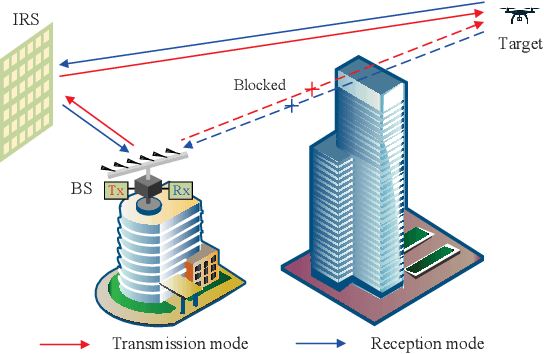
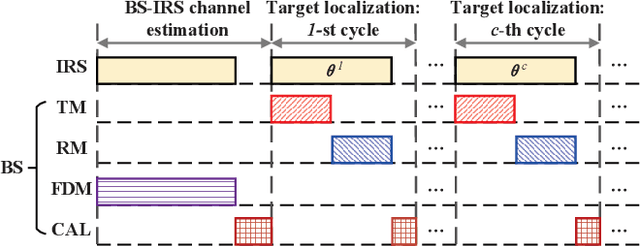
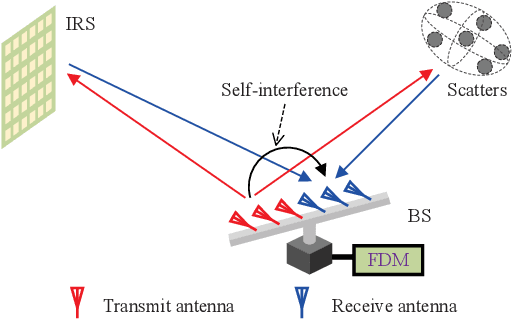
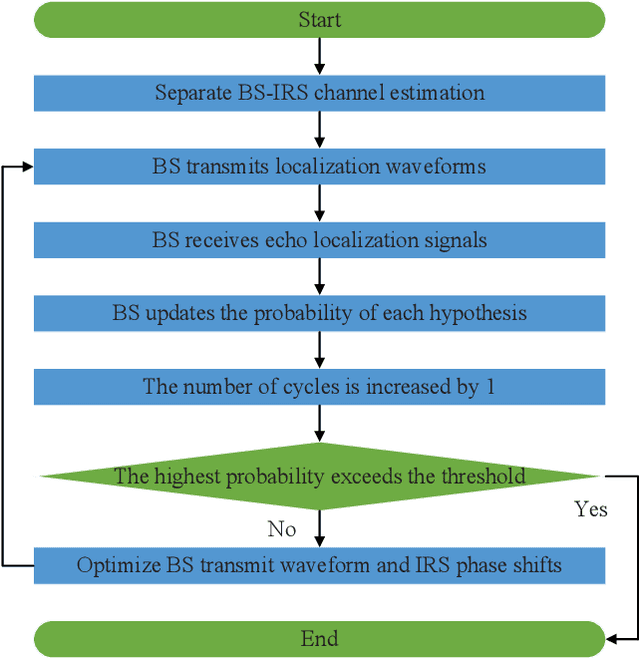
Abstract:Integrating wireless sensing capabilities into base stations (BSs) has become a widespread trend in the future beyond fifth-generation (B5G)/sixth-generation (6G) wireless networks. In this paper, we investigate intelligent reflecting surface (IRS) enabled wireless localization, in which an IRS is deployed to assist a BS in locating a target in its non-line-of-sight (NLoS) region. In particular, we consider the case where the BS-IRS channel state information (CSI) is unknown. Specifically, we first propose a separate BS-IRS channel estimation scheme in which the BS operates in full-duplex mode (FDM), i.e., a portion of the BS antennas send downlink pilot signals to the IRS, while the remaining BS antennas receive the uplink pilot signals reflected by the IRS. However, we can only obtain an incomplete BS-IRS channel matrix based on our developed iterative coordinate descent-based channel estimation algorithm due to the "sign ambiguity issue". Then, we employ the multiple hypotheses testing framework to perform target localization based on the incomplete estimated channel, in which the probability of each hypothesis is updated using Bayesian inference at each cycle. Moreover, we formulate a joint BS transmit waveform and IRS phase shifts optimization problem to improve the target localization performance by maximizing the weighted sum distance between each two hypotheses. However, the objective function is essentially a quartic function of the IRS phase shift vector, thus motivating us to resort to the penalty-based method to tackle this challenge. Simulation results validate the effectiveness of our proposed target localization scheme and show that the scheme's performance can be further improved by finely designing the BS transmit waveform and IRS phase shifts intending to maximize the weighted sum distance between different hypotheses.
Variational Bayesian Learning based Joint Localization and Channel Estimation with Distance-dependent Noise
Mar 07, 2024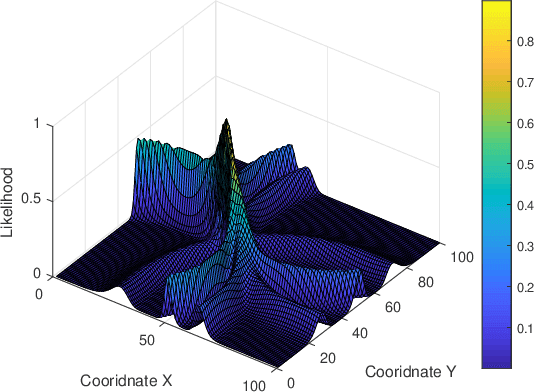
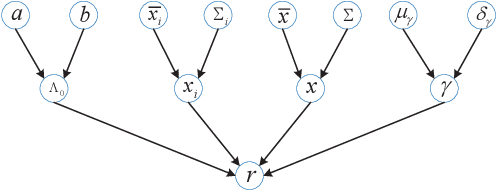
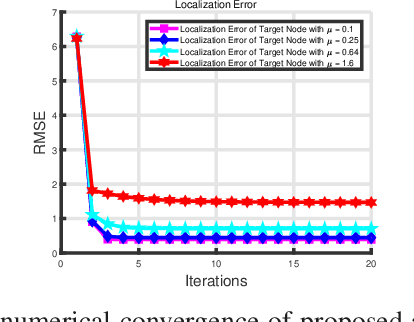
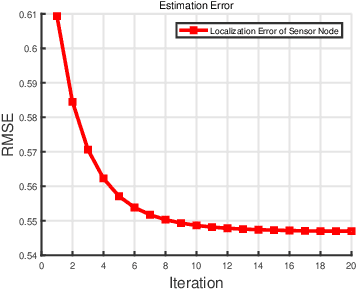
Abstract:In the Industrial Internet of Things (IIoTs) and Ocean of Things (OoTs), the advent of massive intelligent services has imposed stringent requirements on both communication and localization, particularly emphasizing precise localization and channel information. This paper focuses on the challenge of jointly optimizing localization and communication in IoT networks. Departing from the conventional independent noise model used in localization and channel estimation problems, we consider a more realistic model incorporating distance-dependent noise variance, as revealed in recent theoretical analyses and experimental results. The distance-dependent noise introduces unknown noise power and a complex noise model, resulting in an exceptionally challenging non-convex and nonlinear optimization problem. In this study, we address a joint localization and channel estimation problem encompassing distance-dependent noise, unknown channel parameters, and uncertainties in sensor node locations. To surmount the intractable nonlinear and non-convex objective function inherent in the problem, we introduce a variational Bayesian learning-based framework. This framework enables the joint optimization of localization and channel parameters by leveraging an effective approximation to the true posterior distribution. Furthermore, the proposed joint learning algorithm provides an iterative closed-form solution and exhibits superior performance in terms of computational complexity compared to existing algorithms. Computer simulation results demonstrate that the proposed algorithm approaches the performance of the Bayesian Cramer-Rao bound (BCRB), achieves localization performance comparable to the ML-GMP algorithm, and outperforms the other two comparison algorithms.
GAN Based Near-Field Channel Estimation for Extremely Large-Scale MIMO Systems
Feb 27, 2024Abstract:Extremely large-scale multiple-input-multiple-output (XL-MIMO) is a promising technique to achieve ultra-high spectral efficiency for future 6G communications. The mixed line-of-sight (LoS) and non-line-of-sight (NLoS) XL-MIMO near-field channel model is adopted to describe the XL-MIMO near-field channel accurately. In this paper, a generative adversarial network (GAN) variant based channel estimation method is proposed for XL-MIMO systems. Specifically, the GAN variant is developed to simultaneously estimate the LoS and NLoS path components of the XL-MIMO channel. The initially estimated channels instead of the received signals are input into the GAN variant as the conditional input to generate the XL-MIMO channels more efficiently. The GAN variant not only learns the mapping from the initially estimated channels to the XL-MIMO channels but also learns an adversarial loss. Moreover, we combine the adversarial loss with a conventional loss function to ensure the correct direction of training the generator. To further enhance the estimation performance, we investigate the impact of the hyper-parameter of the loss function on the performance of our method. Simulation results show that the proposed method outperforms the existing channel estimation approaches in the adopted channel model. In addition, the proposed method surpasses the Cram$\acute{\mathbf{e}}$r-Rao lower bound (CRLB) under low pilot overhead.
Fast Direct Localization for Millimeter Wave MIMO Systems via Deep ADMM Unfolding
Feb 06, 2023


Abstract:Massive arrays deployed in millimeter-wave systems enable high angular resolution performance, which in turn facilitates sub-meter localization services. Albeit suboptimal, up to now the most popular localization approach has been based on a so-called two-step procedure, where triangulation is applied upon aggregation of the angle-of-arrival (AoA) measurements from the collaborative base stations. This is mainly due to the prohibitive computational cost of the existing direct localization approaches in large-scale systems. To address this issue, we propose a deep unfolding based fast direct localization solver. First, the direct localization is formulated as a joint $l_1$-$l_{2,1}$ norm sparse recovery problem, which is then solved by using alternating direction method of multipliers (ADMM). Next, we develop a deep ADMM unfolding network (DAUN) to learn the ADMM parameter settings from the training data and a position refinement algorithm is proposed for DAUN. Finally, simulation results showcase the superiority of the proposed DAUN over the baseline solvers in terms of better localization accuracy, faster convergence and significantly lower computational complexity.
Mobile Device Association and Resource Allocation in Small-Cell IoT Networks with Mobile Edge Computing and Caching
Feb 26, 2022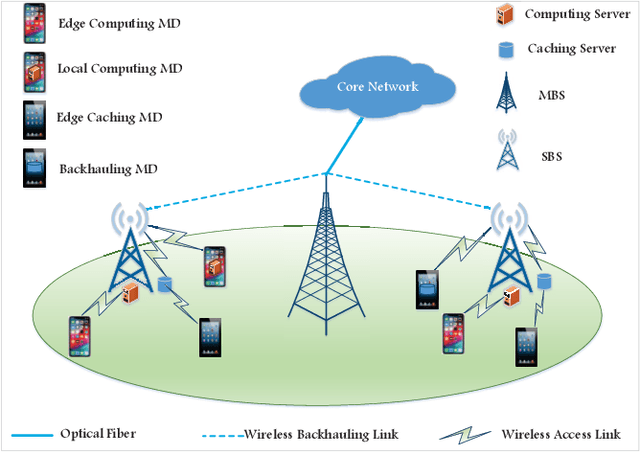
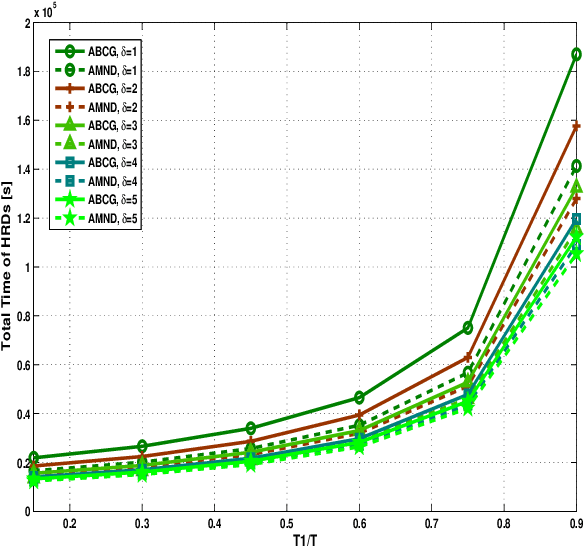
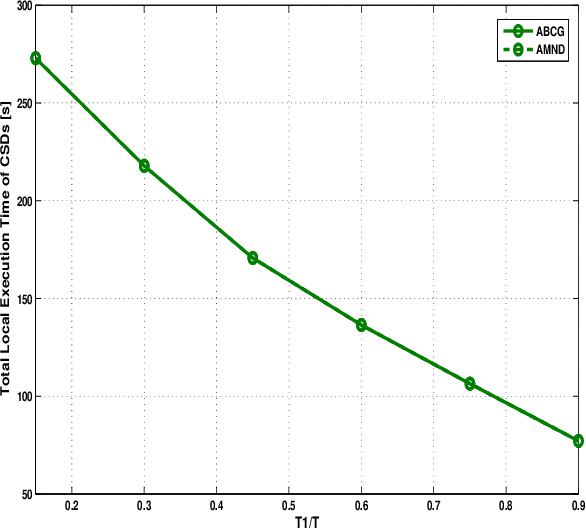
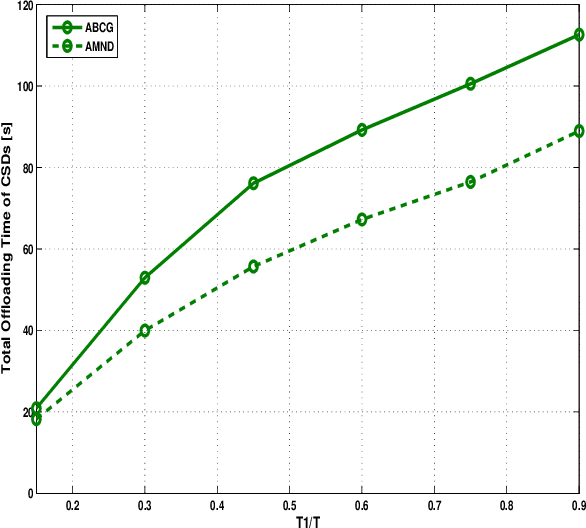
Abstract:To meet the need of computation-sensitive (CS) and high-rate (HR) communications, the framework of mobile edge computing and caching has been widely regarded as a promising solution. When such a framework is implemented in small-cell IoT (Internet of Tings) networks, it is a key and open topic how to assign mobile edge computing and caching servers to mobile devices (MDs) with CS and HR communications. Since these servers are integrated into small base stations (BSs), the assignment of them refers to not only the BS selection (i.e., MD association), but also the selection of computing and caching modes. To mitigate the network interference and thus enhance the system performance, some highly-effective resource partitioning mechanisms are introduced for access and backhaul links firstly. After that a problem with minimizing the sum of MDs' weighted delays is formulated to attain a goal of joint MD association and resource allocation under limited resources. Considering that the MD association and resource allocation parameters are coupling in such a formulated problem, we develop an alternating optimization algorithm according to the coalitional game and convex optimization theorems. To ensure that the designed algorithm begins from a feasible initial solution, we develop an initiation algorithm according to the conventional best channel association, which is used for comparison and the input of coalition game in the simulation. Simulation results show that the algorithm designed for minimizing the sum of MDs' weighted delays may achieve a better performance than the initiation (best channel association) algorithm in general.
ConvTransformer: A Convolutional Transformer Network for Video Frame Synthesis
Nov 20, 2020

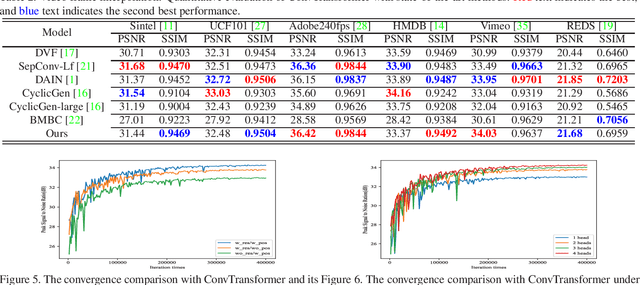

Abstract:Deep Convolutional Neural Networks (CNNs) are powerful models that have achieved excellent performance on difficult computer vision tasks. Although CNNS perform well whenever large labeled training samples are available, they work badly on video frame synthesis due to objects deforming and moving, scene lighting changes, and cameras moving in video sequence. In this paper, we present a novel and general end-to-end architecture, called convolutional Transformer or ConvTransformer, for video frame sequence learning and video frame synthesis. The core ingredient of ConvTransformer is the proposed attention layer, i.e., multi-head convolutional self-attention, that learns the sequential dependence of video sequence. Our method ConvTransformer uses an encoder, built upon multi-head convolutional self-attention layers, to map the input sequence to a feature map sequence, and then another deep networks, incorporating multi-head convolutional self-attention layers, decode the target synthesized frames from the feature maps sequence. Experiments on video future frame extrapolation task show ConvTransformer to be superior in quality while being more parallelizable to recent approaches built upon convoltuional LSTM (ConvLSTM). To the best of our knowledge, this is the first time that ConvTransformer architecture is proposed and applied to video frame synthesis.
 Add to Chrome
Add to Chrome Add to Firefox
Add to Firefox Add to Edge
Add to Edge